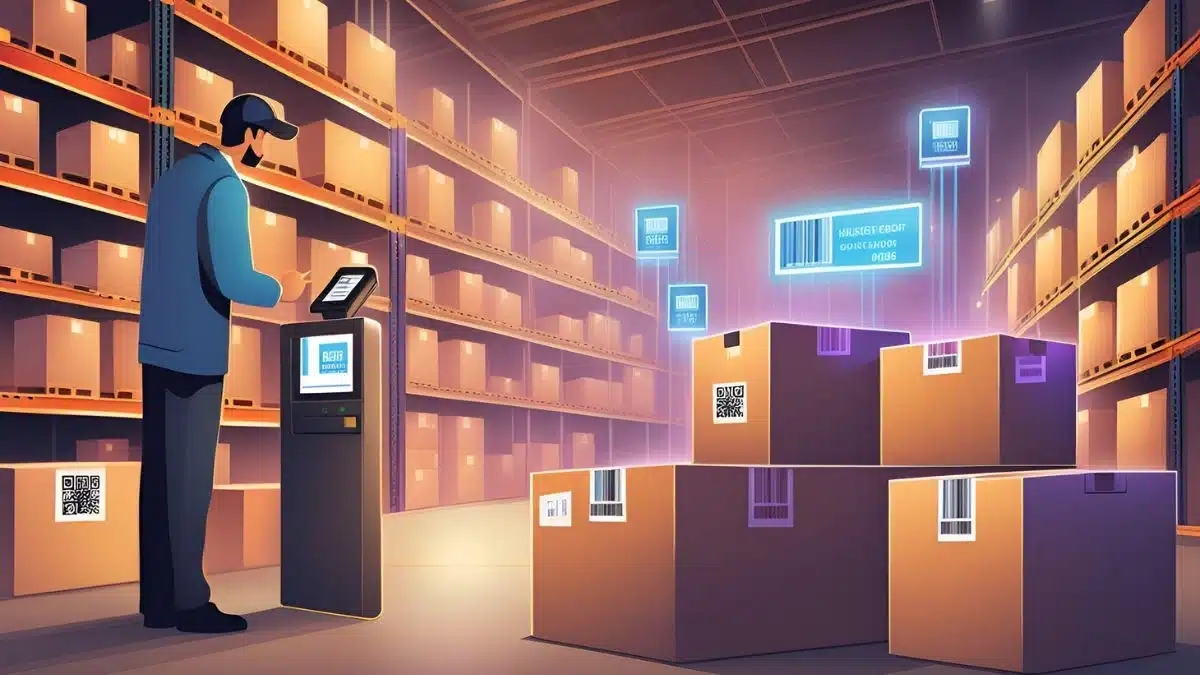Tagging assets is vital for medium and large companies in the Philippines, where investments in machinery, equipment, and technology are common.
With the global asset tracking market projected to hit $36.3 billion by 2025, businesses face challenges managing assets efficiently amidst rapid growth and complex supply chains.
As the Filipino proverb says, “Aanhin pa ang damo kung patay na ang kabayo?” This highlights the need for timely resource management. By implementing asset tagging, companies can better control resources, streamline maintenance, and minimize loss or theft.
This article will cover the essentials of asset tagging, the tagging process, and how inventory software can optimize your strategy for improved efficiency. Join us in exploring how asset tagging can benefit and transform your business’s asset management system approach.
Key Takeaways
|
Table of Contents
What is Tagging Assets?
Asset tagging is an important inventory management strategy that involves placing unique identification labels or tags on an organization’s physical assets, such as equipment, machinery, vehicles, and IT assets. These tags usually include barcodes, QR codes, or RFID tags that serve as unique identifiers linked to specific assets in an asset tracking system.
The main goal of asset tagging is to improve visibility and control over assets throughout their entire lifecycle. By giving each item a unique ID, organizations can easily track the real-time location and movement of their assets across multiple facilities.
Using an asset tagging system allows companies to:
- Streamline Asset Management: By keeping detailed maintenance and repair histories, businesses can ensure timely upkeep, which helps prolong the life of their assets.
- Prevent Loss and Theft: Job site theft costs the construction industry around $1 billion annually. Asset tagging reduces the risk of losing valuable resources by accurately tracking equipment locations.
- Calculate Depreciation Accurately: Companies can maintain precise records for accounting and tax purposes, which ensures financial statements reflect the true value of assets.
- Enhance Inventory Audits: Asset tagging simplifies inventory management, making it easier to conduct audits and assess the condition of assets.
Additionally, asset tags can be customized to include extra information, such as item descriptions, purchase dates, current locations, and user history.
By using cloud-based tools and tracking technologies, businesses can improve their asset management processes, decrease the chances of asset misplacement, and boost maintenance control and reliability. The integration of asset tracking software further enhances the ability to manage and monitor assets in real time, ensuring seamless operations and better decision-making.
As a result, organizations are increasingly recognizing the benefits of adopting effective asset tagging strategies to enhance operational efficiency and drive growth.
What Is the Purpose of Asset Tagging?

Asset tagging plays a crucial role in managing resources effectively. By assigning unique identifiers to each asset, companies can efficiently track their valuable resources. For instance, using printed barcodes or QR codes eliminates the need for manual data entry.
This not only leads to accurate inventory tracking but also improves documentation of important activities, such as maintenance and repairs. Furthermore, asset tags act as unique markers that contain vital information, including the asset’s name, location, owner, and identification number.
This feature allows employees to quickly find an asset’s status and whereabouts simply by scanning the tag. Additionally, real-time tracking provides precise location updates, which makes managing assets much easier.
Moreover, asset tagging significantly enhances security. It helps prevent unauthorized access and misuse of assets. For example, the construction industry in the Philippines suffers losses of about ₱22 billion annually due to equipment theft.
However, using asset tags can deter thieves because monitoring asset movements discourages theft. Moreover, any discrepancies in asset counts can be quickly identified, aiding in the recovery of lost items.
Asset tags also improve the tracking of items that frequently move between different locations.
This automation streamlines the entry and retrieval of assets. Technologies like RFID allow businesses to monitor assets in real-time without needing physical checks, which makes workflows more efficient.
Lastly, it is important for asset tags to be durable enough to withstand various conditions, especially in tough environments like construction sites. Using high-quality materials helps prevent wear and tear, thus avoiding replacement costs.
Additionally, lamination can enhance durability, ensuring that tags remain intact and easy to read over time.
Why Does Asset Tagging Important?
Asset tags play a key role in effectively managing and tracking business assets, especially for companies with a large volume of equipment, tools, or other physical resources. By assigning a unique code or identifier to each item, asset tags eliminate manual processes, which are often prone to human error, and provide a more accurate and streamlined approach to managing assets. Here are the key reasons why it matters for your business:
-
Precise asset identification
Asset tags ensure that every piece of equipment or inventory item is distinctly identifiable. This is especially crucial for organizations with numerous similar items. Scanning an asset tag gives immediate access to important details like its location, usage records, and maintenance history, which reduces the chances of misidentification and improves tracking efficiency.
-
Automated data collection and reporting:
Asset tags make it easier for businesses to record essential data automatically, such as movement history, maintenance schedules, and asset condition. When integrated with asset management software, this data becomes instantly accessible, empowering teams to quickly resolve equipment issues and reduce downtime.
-
Theft deterrence and loss prevention:
One significant benefit of asset tagging is its ability to deter theft and prevent loss. By enabling real-time tracking, businesses can monitor the movement of assets and swiftly detect unauthorized activity. This added layer of visibility serves as a deterrent against theft, saving the business from expensive losses and the difficulty of recovering missing assets.
-
Increased operational efficiency:
By using asset tags, businesses eliminate the need for manual record-keeping, which can be time-consuming and prone to errors. Automated scanning and real-time tracking ensure smoother operations, whether it’s tracking tools at a job site or managing office equipment across multiple locations.
-
Durability and reliability:
Asset tags are designed to endure challenging conditions. For assets located outdoors or in harsh environments, the tags are built to resist damage from weather, heat, or other elements. By using durable tags, businesses avoid the hassle and costs associated with frequent replacements and ensure continuous tracking over the asset’s lifespan.
-
Better inventory and cost management:
Asset tagging gives businesses greater control over their inventory by providing accurate data on what assets they own and where they are located. This level of oversight helps prevent over-ordering, minimize unnecessary expenses, and optimize asset usage. Additionally, by keeping a clear inventory, companies can simplify accounting processes, such as tracking asset depreciation and managing taxes.
What Are the Benefits of Asset Tagging?

Asset tags bring significant advantages to medium and large companies, particularly in asset-heavy industries like manufacturing, logistics, and construction. When effectively implemented, asset tagging offers practical solutions that improve operational efficiency, reduce costs, and safeguard valuable resources. Let’s explore the key benefits of asset tags below:
-
Enhance asset visibility
By tagging each asset, businesses can quickly identify what they own, where it is located, and its condition. This enhanced visibility allows companies to track high-value assets more easily, reducing the chances of misplacement or loss.
-
Boost efficiency with real-time tracking
Asset tags, especially those with RFID or GPS capabilities, allow businesses to track assets in real-time. This ensures that teams always know the exact location of important equipment or products, preventing delays in operations and improving productivity.
-
Minimize loss and theft
One of the key benefits of asset tags is that they help reduce the risk of loss or theft. Since each tagged item can be tracked, it’s easier to monitor the movement of assets and prevent unauthorized access, saving the company from costly replacements.
-
Streamline maintenance and repairs
Asset tags make it easier to manage maintenance schedules and repair histories. With a simple scan of the tag, employees can access vital information about the asset, such as its service record, current condition, and any upcoming maintenance needs. This proactive approach helps avoid unexpected downtime and ensures equipment remains operational.
-
Improve accountability among employees
When using asset tags alongside a check-in/check-out system, companies can increase accountability. It becomes clear who is responsible for specific equipment, which reduces the chances of mishandling or losing expensive tools or machinery.
-
Simplify compliance with regulations
In industries where regulatory compliance is necessary, such as healthcare or finance, asset tags help ensure that all equipment meets legal requirements. By tracking the life cycle and condition of each item, businesses can easily prepare for audits and ensure compliance with minimal hassle.
-
Increase data accuracy with automated documentation
Instead of relying on manual data entry, which is prone to errors, asset tags automate the process. This ensures accurate records of assets, eliminating mistakes and saving time for staff.
-
Reduce operational costs
By improving asset tracking, reducing theft, and streamlining maintenance, asset tags ultimately help companies save money. Preventing unnecessary equipment purchases and minimizing downtime leads to lower operational expenses in the long run.
How Assets Must Be Tagged?
Every medium or large business, particularly those in industries like manufacturing, healthcare, or IT, certain assets should definitely be tagged to improve efficiency and accountability. Tagging not only helps monitor valuable resources but also ensures smoother operations across various departments.
First, high-value assets such as machinery, medical devices, and computers need to be tagged. These items are essential for daily operations and often come with significant costs, so tracking them helps prevent loss or theft.
Additionally, frequently moved assets like tools or laptops that are regularly transferred between locations should also be tagged. This allows you to monitor their whereabouts in real-time and avoid misplacement.
Moreover, shared assets that are used by different teams or departments, such as projectors or specialized equipment, should be tagged to keep track of who is using them and when they are available. By tagging these assets, businesses can enhance accountability and reduce confusion in asset usage.
While it’s not always feasible to tag every single item, focusing on high-value, movable, and shared assets ensures better control, helps cut costs, and boosts overall productivity.
How to Tag Assets?
![]()
For medium and large companies in the Philippines, tagging assets is essential for efficient tracking and maintaining organized operations. Here’s how your company can effectively tag assets using these simple steps:
-
Assign a unique ID number
Start by giving each asset a unique identification number. This ID number is crucial because it helps identify and track each asset separately. Avoid using serial numbers or SKUs since they are often shared by multiple items. Instead, create a specific ID for each asset to make it easy for your team to track and manage inventory, reorders, and maintenance tasks.
-
Choose the right type of tag
After assigning IDs, the next step is to select the appropriate tag for your assets. Options like barcodes, RFID tags, GPS trackers, or QR codes are available. The type of tag you choose should match your needs and the environment where the assets are located. For example, if your business deals with harsh conditions, using durable materials like heavy-duty plastic or metal tags can ensure long-lasting use.
-
Create an asset profile
Once you have the tag, it’s important to build an asset profile for each item. This profile includes key information like the asset’s location, condition, purchase date, and maintenance schedule. Adding these details allows your team to have quick access to essential information whenever needed. You can also use QR codes or barcodes that can be scanned to pull up the asset’s profile instantly.
Finally, securely attach the tag to the asset. Ensure its placed in a visible and accessible spot for easy scanning or identification. Depending on the type of tag, you can either use adhesive or mechanical fasteners to make sure the tag stays in place. Once the tag is affixed, update your asset tracking system so that all relevant information is connected to the tag.
Conclusion
Effective asset management is essential for medium and large companies aiming for success. By adopting an asset tagging system, businesses can optimize operations, reduce losses, and improve accountability.
This approach can boost tracking efficiency and ensure compliance with industry regulations. As the asset tracking market grows, companies need strategies that keep them competitive.
By using HashMicro’s Asset Control Software, as the best asset management software solutions for Filipino businesses, it offers real-time resource monitoring, cost reporting, and maintenance scheduling. Our product has Features like GPS tracking and barcode stock-taking which can enhance asset visibility and efficiency.
Remember asset tagging isn’t just a logistical task, it’s a strategic advantage. By adopting best practices and using good Asset control software like HashMicro, businesses can improve asset visibility, reduce costs, and drive growth. Prepare for success in a competitive market by trying a free demo of HashMicro’s software today.





































